What Is a Dry Type Transformer and How Does It Differ from Oil-Filled Types?
Have you ever wondered how the electricity from power plants safely reaches your phone charger? The secret lies in a device called a transformer, and today we’re exploring a special kind: the dry type transformer.
A dry type transformer is like a language translator for electricity. It changes the voltage of electricity without using oil for cooling, unlike its oil-filled cousins. This makes it safer, cleaner, and perfect for use in buildings where we live and work.
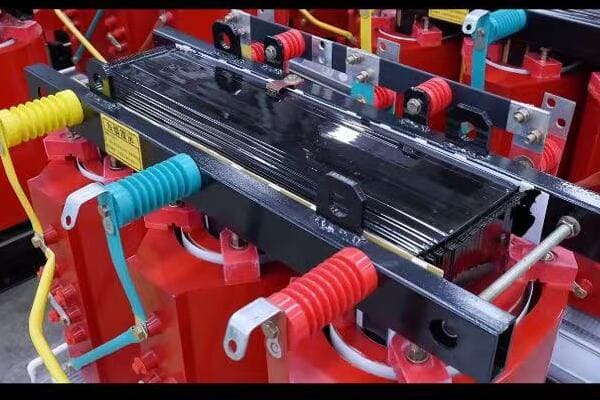
As someone who’s spent years working with these electrical ‘translators’, let me take you on a journey to understand why dry type transformers are the unsung heroes of our electrified world.
Dry vs. Oil-Filled: Understanding the Fundamental Differences in Transformer Design?
Imagine you have two translators: one carries a big bottle of water to stay cool, while the other uses a fan. That’s the basic difference between oil-filled and dry type transformers.
Dry type transformers use air or special materials for cooling, while oil-filled types swim in oil. This key difference makes dry types safer for indoor use, like in hospitals or high-rise buildings, where oil leaks could be disastrous.
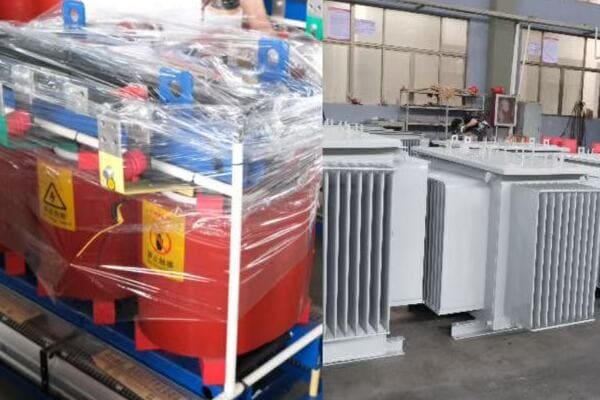
Let’s break down the main differences:
-
Cooling Method:
- Dry Type: Uses air, like your laptop’s cooling fan.
- Oil-Filled: Uses oil, like a car’s engine cooling system.
-
Safety:
- Dry Type: Lower fire risk, like using an electric stove.
- Oil-Filled: Higher fire risk, more like a gas stove.
-
Environmental Impact:
- Dry Type: No risk of oil spills, like using a reusable water bottle.
- Oil-Filled: Potential for oil leaks, like carrying a disposable water bottle that might leak.
-
Size and Weight:
- Dry Type: Usually bigger but lighter, like a large cardboard box.
- Oil-Filled: More compact but heavier, like a small metal safe.
-
Maintenance:
- Dry Type: Easier to maintain, like an electric car.
- Oil-Filled: Requires oil checks and changes, more like a traditional car.
In my work, I’ve seen how crucial these differences can be. For example, when designing the power system for a new hospital, we chose dry type transformers. Why? Because in a place where safety is paramount, the last thing you want is a potential oil fire near sensitive medical equipment.
The Inner Workings of Dry Type Transformers: Materials, Structure, and Cooling Methods?
Ever wondered what’s inside these electrical wizards? Let’s peek under the hood of a dry type transformer.
Dry type transformers are built with special metals and insulating materials that can handle high temperatures without oil. They use clever designs to keep cool, much like how your body sweats to cool down.
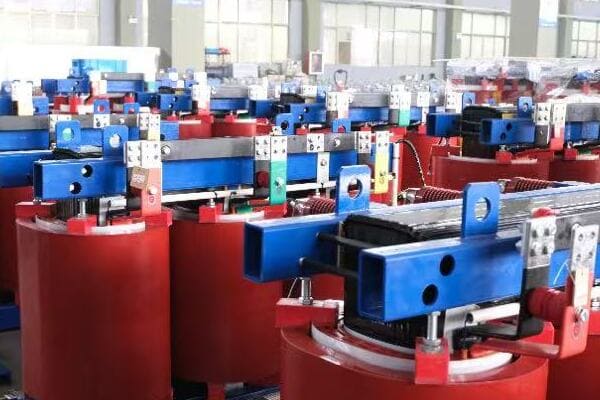
Here’s a simple breakdown of what’s inside:
-
The Core:
- Think of this as the transformer’s heart. It’s usually made of thin sheets of silicon steel.
- Why silicon steel? It’s like using a good conductor for sound in headphones – it helps the transformer work efficiently.
-
The Windings:
- These are like the transformer’s muscles. They’re usually made of copper or aluminum.
- They’re wrapped in special insulating materials, kind of like how you wrap a gift – it keeps everything safe and separate.
-
Cooling System:
- This is how the transformer stays cool without oil. It’s either:
a) Natural Air Cooling: Like opening windows in your house.
b) Forced Air Cooling: More like using electric fans.
- This is how the transformer stays cool without oil. It’s either:
In one project, we installed a dry type transformer in a data center. The client was amazed at how such a powerful device could operate without any liquid cooling. It’s all in the clever use of materials and design!
Safety First: Environmental and Fire Protection Advantages of Dry Type Transformers?
Why are dry type transformers often called the safer choice? Let’s explore.
Dry type transformers are like the electric cars of the transformer world – cleaner, safer, and more environmentally friendly. They don’t use oil, which means no risk of oil fires or spills.
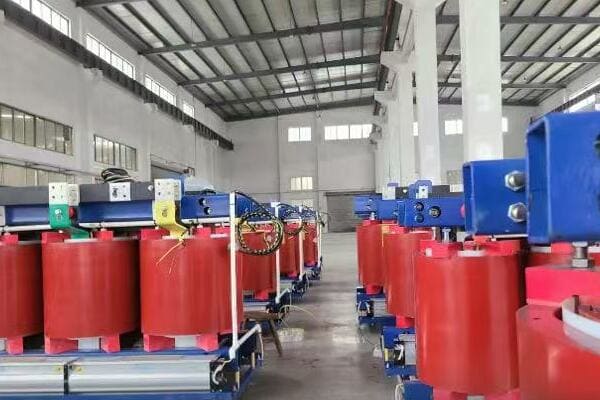
Here’s why they’re considered safer:
-
Fire Safety:
- No oil means lower fire risk. It’s like choosing an LED light bulb over a candle.
- They’re often used in buildings where fire safety is crucial, like schools or hospitals.
-
Environmental Protection:
- No oil means no risk of oil leaks. It’s like using a digital camera instead of film – no chemicals to worry about.
- Easier to dispose of at the end of their life, like recycling an old phone.
-
Indoor Use:
- Safe to use indoors, even in sensitive areas. It’s like being able to bring your electric heater into any room without worry.
I once worked on a project for a green building. The architects were thrilled when we suggested dry type transformers – it helped them achieve their eco-friendly goals without compromising on power needs.
Application Scenarios: Where Dry Type Transformers Shine Brightest?
Where would you find these oil-free electrical heroes? Let’s explore.
Dry type transformers are the go-to choice for indoor and sensitive environments. You’ll find them in skyscrapers, hospitals, schools, and even on ships. They’re perfect where safety and cleanliness are top priorities.
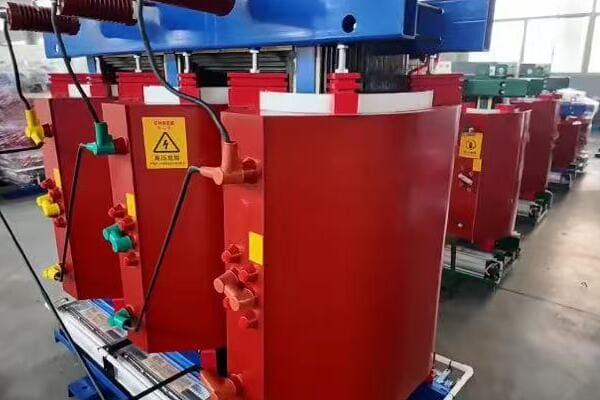
Here are some common places you might find them:
-
High-Rise Buildings:
- Used because they’re safer and don’t need special oil containment areas.
- It’s like choosing a safer, more compact heating system for an apartment building.
-
Hospitals:
- Critical for providing clean, reliable power to sensitive medical equipment.
- Think of it as using a surge protector for life-saving machines.
-
Industrial Facilities:
- Used in areas where oil leaks could be dangerous or disruptive to production.
- It’s like using electric forklifts instead of gas-powered ones in a warehouse.
-
Renewable Energy Projects:
- Often used in wind turbines or solar farms.
- They’re like the eco-friendly batteries for green energy systems.
In my career, I’ve installed dry type transformers in some interesting places. Once, we put one on a cruise ship. The ship’s engineers loved it because it was safer and took up less space than a traditional oil-filled transformer.
Maintenance and Longevity: Caring for Your Dry Type Transformer?
How do you keep a dry type transformer happy and healthy? Let’s find out.
Dry type transformers are like low-maintenance pets. They need regular check-ups but not daily care. With proper attention, they can serve reliably for decades.
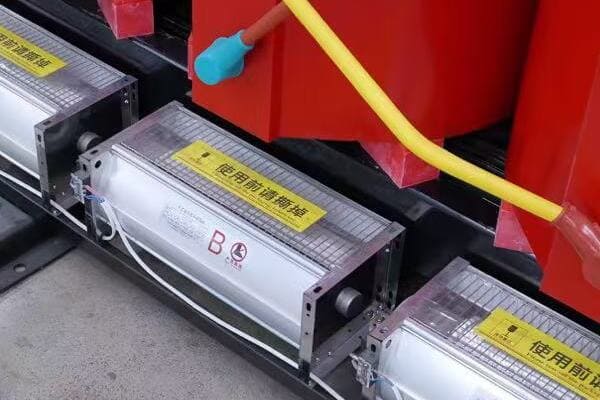
Here’s how to care for your dry type transformer:
-
Regular Inspections:
- Look for dust or debris. It’s like dusting your bookshelves – it keeps everything running smoothly.
- Check for any unusual sounds or smells. It’s like listening to your car engine for odd noises.
-
Cleaning:
- Keep air vents clear. Think of it as cleaning the filter in your air conditioner.
- Use dry cleaning methods. It’s like using a dry cloth to clean your TV screen.
-
Environmental Control:
- Maintain proper ventilation. It’s like ensuring your computer has enough airflow to prevent overheating.
- Control humidity if possible. Think of it as using a dehumidifier in a damp basement.
-
Electrical Testing:
- Periodic tests to check insulation. It’s like getting a health check-up for your transformer.
I once worked with a client who had a 30-year-old dry type transformer still in perfect working condition. The secret? Consistent, thorough maintenance over the years.
Conclusion
Dry type transformers are the unsung heroes of our electrical world. They’re safer, cleaner, and perfect for indoor use. From hospitals to high-rises, these oil-free marvels keep our power flowing safely and efficiently. Remember, the next time you plug in your phone or turn on a light in a big building, a dry type transformer might be working silently to make it happen!
Free CHBEB Transformer Catalog Download
Get the full range of CHBEB transformers in one catalog.
Includes oil-immersed, dry-type, pad-mounted, and custom solutions.
Quick Message
Request A free quote
We'd like to work with you
- +86 15558785111
- [email protected]
- +86 15558785111
What We Do
CHINA BEI ER BIAN (CHBEB) GROUP, with 218 million in registered capital, originated from Beijing Beierbian Transformer Group. Headquartered in Beijing for R&D, it operates major production bases in Nanjing and Yueqing, producing high-quality products.
Latest Product
address
BeiJing
No 3,RongJing East Road,BeiJing Economic Technological Development Area,BeiJing,China
JiangSu
No 7️Xiangfeng Road,Jiangning,NanJing,JiangSu,China
WenZhou
No.211, Wei 16 Road, Industrial Zone, Yueqing, Wenzhou, Zhejiang, China.
XiangYang Industrial Zone ,YueQing,WenZhou,ZheJiang,China
contact us
- [email protected]
- +86 13057780111
- +86 13057780111
- +86 15558785111
Copyright © Bei Er Bian Group


